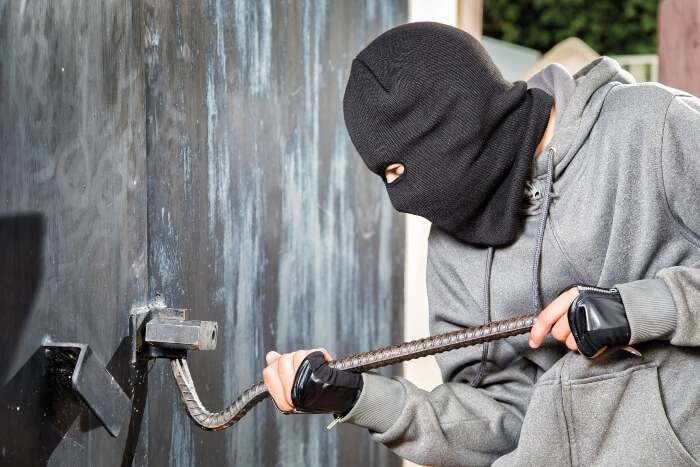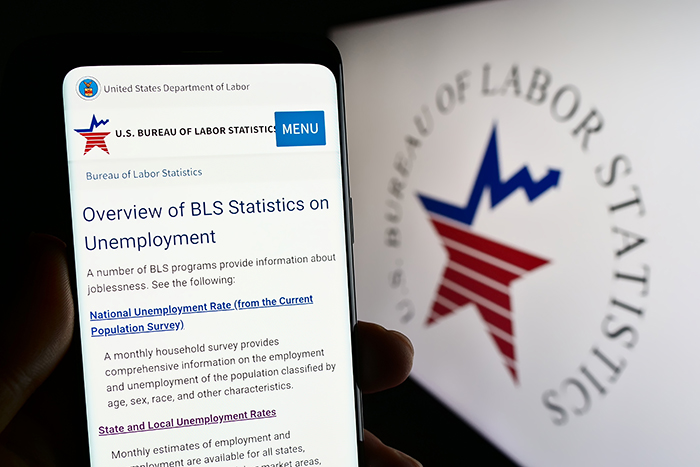If it hasn’t happened to your company, you know a company where it has. Some equipment goes missing, or a break-in makes off with hundreds of dollars’ worth of gear. No matter the size of the landscaping company, the promise of equipment that can be easily offloaded at a pawn shop or sold online makes it a target for theft. The perpetrator might even be on staff. It’s impossible to completely guard against theft, but a company can be a tougher mark if you remember some guidelines.
“Criminals want the easy way out,” says Lynda Buel, president and CEO of Security Risk Management Consultants in Columbus, Ohio. “It’s often a crime of opportunity. That’s what you have to think about. If you remove those opportunities, they’re probably going to leave you alone and go down the street.”
A crew’s truck and trailer can be a prime target for theft, and there are several ways to safeguard your investments. One of the first and easiest ways to protect a truck is just to tell your crew to remember to lock it while on-site, even if they’re working nearby, says Buel.
“Lock your vehicle, lock your trailers and don’t leave the keys,” Buel says.
Even if your crew isn’t far from the truck, working around a property can give plenty of opportunities where the vehicle isn’t in direct sight, she says. Even hand-held power equipment can provide enough noise to mask a potential thief breaking in. A steering wheel lock could also discourage a would-be thief, and GPS tracking has been a popular approach for trucks and trailers, as well as other high-value equipment that might be on the trailer.
Vehicle locks and locking equipment down in a trailer while out in the field could seem time-consuming on the job, but it seriously reduces the chances for potential theft, says John White, president and CEO of Protection Management LLC of Canton, Ohio.
“Taking five minutes to lock and unlock something, it might be an inconvenience,” White says. “But you have to decide how much risk you’re willing to accept. How much loss can you handle?”
An enclosed trailer will do more to protect your equipment than an open flat trailer, but a hitch lock is even more important in preventing someone from hitching the whole trailer up and driving off, White says. Make sure that the company logo is prominently displayed somewhere on the trailer, so if it is stolen, it’s easier for the police to find.
“Make it stand out like a sore thumb,” White says. “If something is very unique, it’s going to be easier to spot going down the highway, so it doesn’t just look like another trailer.”
Some manufacturers of large equipment use generic keys for startup, which means a savvy thief could find a common key with some research, she says.
“One of the suggestions would be to rekey that high-value equipment, so you don’t have to worry about someone buying a key off the internet and stealing it,” says Buel.
This makes particular sense if some equipment has to be left on-site for the duration of a job, especially if the equipment is in an unprotected, visible area. In that case, Buel says removing the battery before leaving the job site will also help protect equipment.
Protecting hand-held gear
Smaller equipment like gas cans, chain saws, trimmers and blowers are a major target, given how easy they are to carry off or conceal and how difficult they can be to identify or track. One of the most basic ways to protect small equipment is just to mark it with the company name, says Buel. That can be as simple as using permanent markers to label equipment with a name and phone number.
If you want to dig deeper, using an engraving tool to etch the company name and phone number in it would make the information more difficult to remove, Buel says. Make and maintain a log of the serial numbers of your small and large equipment, so you have that information ready if something goes missing. If a piece of equipment doesn’t come with a serial number, develop an in-house numbering system and mark it accordingly. The inventory list should include what date the equipment was purchased, where and how it was purchased, and any warranty information available.
If small equipment is kept on trailers overnight, try to keep them inside a building protected by an alarm system. If they have to be left outside, park the trailers so that reaching the doors or equipment itself would be challenging, such as backing up to a fence or wall. Small equipment should not be visible to the street overnight, Buel says.
In the trailer itself, small equipment should be locked down in storage or kept in locked cages, she says.
“That gives it double protection,” says Buel. “If they break into the back of the truck, they’ve got the storage units or cages to deal with as well. Once again, it just makes it more difficult. A thief wants to be in and out.”
Establishing a perimeter
Protecting your garage and gear starts with a concept called crime prevention through environmental design, or CPTED, says Frank Pisciotta, president and CEO of Business Protection Specialists Inc. of Raleigh, North Carolina. That means looking at the garage’s surroundings and reducing the opportunities for a thief to get close unobserved.
“In keeping with CPTED, one of the concepts is natural surveillance,” Pisciotta says. “What that translates to is avoiding landscaping that’s higher than 18 inches or tree canopies that are lower than 6-7 feet.”
Trees or shrubs in those ranges can provide cover for a potential thief to move while staying out of sight. Also, consider the size and shape of plants throughout the annual lifecycle. As they grow and change through the year, they could impact lighting or interfere with video surveillance, Piscotta says, though plants can work as a natural barrier if you use thorny varieties.
Thought it might feel counterintuitive at first, a privacy fence isn’t the right choice for your company garage, says Buel.
“It actually gives the criminal the opportunity to hide right there as they’re doing their thing,” she says. “We always recommend that you use fencing that you can see through.”
It’s also important to avoid fencing that’s easily scaled. Using some kind of security wire at the top or decorative spikes can be an added deterrent, she says.
Security lights, which can be motion-activated, and an alarm can be other tools that don’t take a huge investment but make the garage a more difficult target, says White.
One major development in security monitoring has been the introduction of smart systems that can feed information and video immediately to a cloud-connected device, she says. While a small business owner used to have to rely on third-party monitoring companies, the internet and wireless capabilities provide more control and quick feedback.
Know who has access to your garage, and how many keys are in use, says White. Consider changing the locks on a regular basis every few years, especially if your company has a high turnover. Even if you received a key back from a past employee, that doesn’t mean a copy wasn’t made. Electronic locks can make it easier to determine which employees have access to the shop, and some systems allow restrictions to only regular work hours.
Looking inside
Protecting your business from internal theft starts with accountability, says White. The crew supervisor needs to be able to track every piece of equipment assigned to the crew for the day. Make sure the employee manual covers the procedures for handling lost or damaged equipment.
It might feel unnecessary for seasonal workers, but a background check is often helpful in finding more trustworthy employees, Buel says. Even if you have a large amount of turnover, “it’s prudent for all companies to have some sort of a process in place to conduct an appropriate background check, including criminal history.” She also highly recommends a drug screening system, especially if your crews are operating large equipment.
Build a reporting system that makes it easy for a crew member to anonymously let a manager know if something unsafe or suspicious is happening, she says.
Use checklists that need to be verified by managers in the morning before heading to the job site and when the crews return to the garage, says White. An electronic checklist makes sense for a larger business, but a physical checklist might be easier for smaller operations.
But the employee who might be most vulnerable to stealing from the company might be the one you least expect, says Buel.
“I’ve learned that it’s always your most valued and trusted employee that steals from you,” she says. “The reason is because you trust them to the point that you allow audits to fall short.” Often, because you do trust those employees, you don’t put checks and balances in place to validate or verify reports from them.
Working with other family members in the business can be especially challenging because it can be difficult to hold them to the same accountability standards as other employees, says White.
“Even family will steal from family,” White says. “You have to have accountability. Understand that it’s your business, your livelihood.”
Employee theft and COVID-19
A pandemic like COVID-19 can put additional stress on employees, sometimes in ways that are tough to immediately see, says Lynda Buel, president and CEO of Security Risk Management Consultants in Columbus, Ohio. You might be maintaining your crews and providing payroll during the crisis, but it’s possible that a family member lost a job or has heavy medical bills that need to be covered. Those situations can give employees a reason to make bad decisions about stealing from work.
In this case, Buel says the strategy for protecting your assets is the same as protecting the health and well-being of your employees: building good communication.
Look for sudden changes in behavior or attitude from an employee as warning signs, says John White, president and CEO of Protection Management LLC of Canton, Ohio. It might make sense to talk to the employee to show empathy in a tough situation and see if there’s a solution that works for both parties.
Sometimes, employees might not want to talk through the issues because they’re embarrassed to need help with a situation, says White. That’s an opportunity for the employer to take the first step during a difficult event.
“People’s prides are at play in this because they’re desperate,” says White. “That’s where employers can step up and say, ‘We’re going to see if we can find supplies, or give out a list of places that are having food pickups. You’re building that loyalty and showing your employees you care.”
If your company has an employee assistance program, it might be a good time to remind them of those benefits and how to access them, she says. It might also be useful to gather information on social and financial services that could help an employee in a tough position.
“I think most importantly, just letting the employees know that if you’re having trouble, we want to hear from you and we want to help you the best we can,” Buel says.





